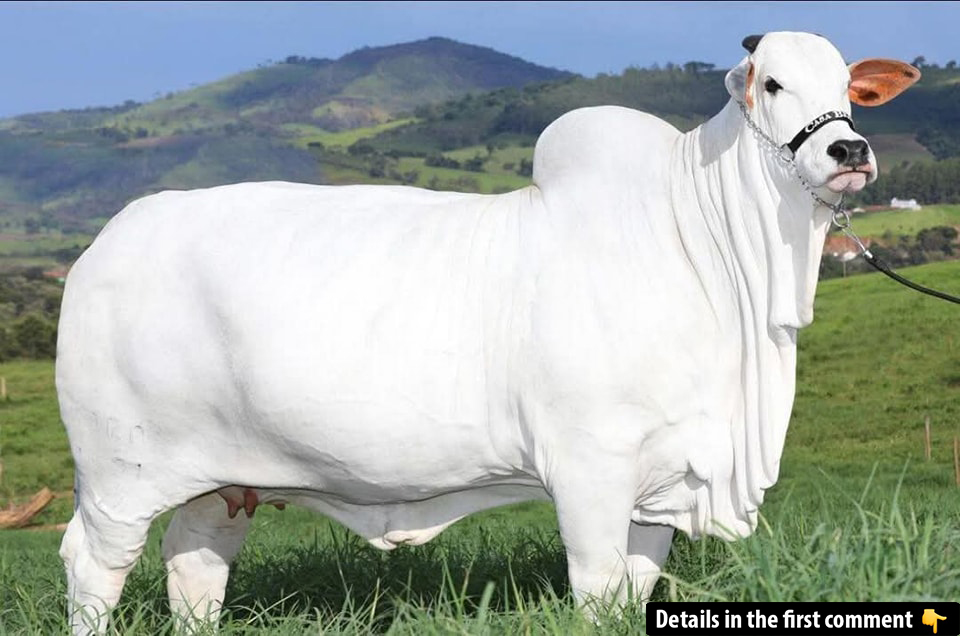In the heart of Brazil’s cattle industry, a remarkable cow has captured the world’s attention—Viatina-19. With a price tag of $4 million, this extraordinary bovine has redefined the standards of livestock breeding. Twice the size of an average cow, she represents Brazil’s ambitions to dominate the global beef market. But Viatina-19’s story goes beyond her weight and price; it’s a tale of innovation, economic power, and the environmental challenges that come with her success.
The Birth of Viatina-19 and Her Rise to Fame
Viatina-19 is not the result of random luck; she is the product of years of research and selective breeding by some of Brazil’s most skilled ranchers. Standing at a remarkable 1,100 kilograms (over 2,400 pounds), she is twice as heavy as an average adult of her breed, the Nelore, a prime cattle variety raised for meat. Viatina-19’s exceptional size and her ability to rapidly gain muscle mass were achieved through careful genetic manipulation, utilizing the best breeding practices and state-of-the-art techniques like embryo transfer and artificial insemination.
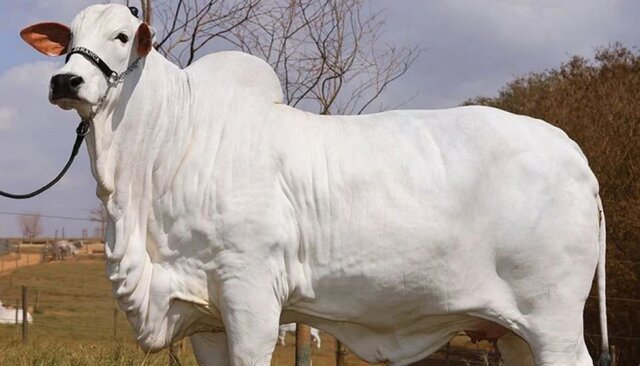
Her genetic lineage is highly valued by Brazil’s elite ranchers, and breeders have eagerly paid top dollar for a chance to obtain her egg cells. The cow’s rare qualities go beyond her impressive size; her fertility and her ability to pass on her superior traits to her offspring have made her a symbol of the future of Brazilian cattle.
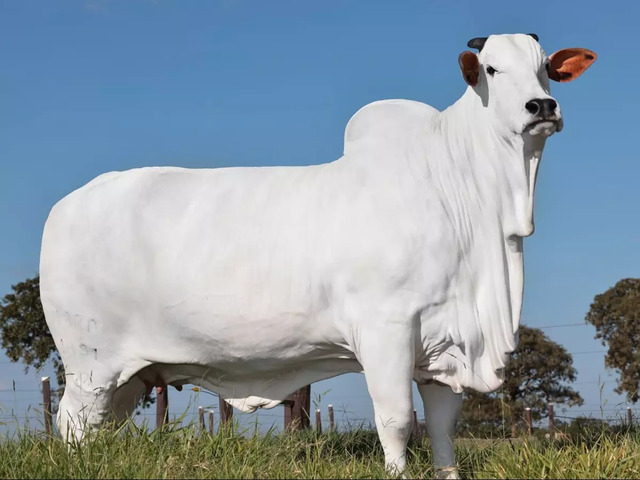
According to Lorrany Martins, a veterinarian and daughter of Viatina-19’s owner, Ney Pereira, the cow is “the closest to perfection that has been attained so far.” The effort invested in producing cattle like Viatina-19 showcases Brazil’s growing focus on the genetics of beef production.
Video
Check out this video to meet Viatina-19, the world’s most expensive cow, valued at an astounding $4.2 million.
The Record-Breaking Price and Its Significance

Viatina-19 has not only set records for her size and fertility but also for her price tag. Sold for a staggering $4 million at auction, she surpassed the previous record-holder by three times. Such high-stakes auctions are common in Brazil’s cattle industry, where wealthy ranchers vie to acquire the next generation of top-tier livestock. Viatina-19’s impressive price reflects her exceptional genetics and the growing demand for superior cattle, which can command hefty prices due to their ability to produce offspring that excel in meat production.

Breeders around the world have clamored to purchase Viatina-19’s eggs or embryos, which are then implanted in surrogate cows. This process ensures that the genetic traits of high-value cattle like Viatina-19 can be passed down, creating a legacy of excellence in meat production. However, Viatina-19’s journey to such a price tag highlights more than just her physical attributes.
She is a symbol of Brazil’s desire to control and shape the global beef market. For Brazilian ranchers, she represents the future of cattle farming, where genetics play a pivotal role in ensuring that the country continues to lead in beef exports.
Viatina-19 and Brazil’s Economic Power
Brazil is no stranger to being a major player in the global agricultural market, and its cattle industry is at the forefront of its economic growth. The country is the world’s largest beef exporter, and ranchers like Ney Pereira and others in the industry view Viatina-19 as a cornerstone of Brazil’s future success.
Despite the environmental concerns surrounding beef production, including the deforestation of the Amazon and the high levels of methane emitted by cattle, Brazil’s government has worked tirelessly to open new export markets, emphasizing the quality and genetic superiority of its beef.
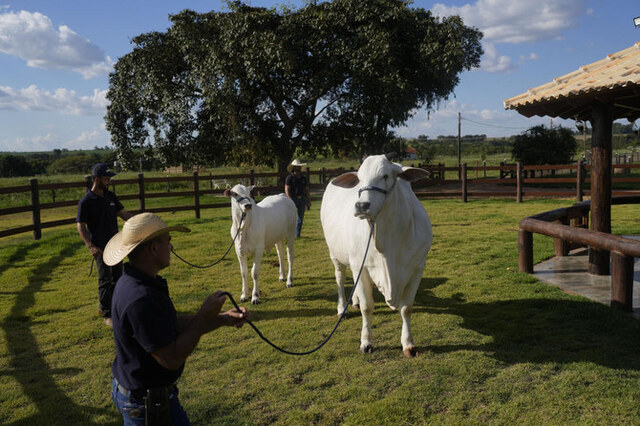
Viatina-19’s rise to fame is a direct reflection of Brazil’s efforts to strengthen its agricultural sector. The government has pushed for greater international recognition of Brazilian beef, with high-profile efforts to market the country’s meat to countries like Japan and the United Arab Emirates. At the same time, Brazil’s top beef producers continue to innovate in cattle genetics, driven by the belief that their livestock can dominate international markets. Viatina-19, with her record-breaking price and genetic superiority, is the perfect symbol of these ambitions.
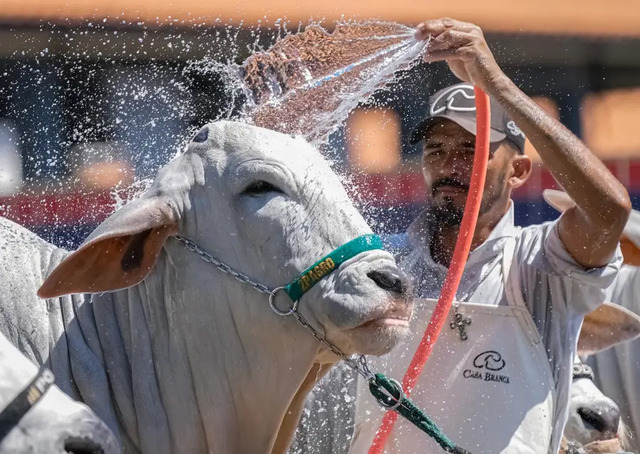
The Environmental and Ethical Debate
While the economic benefits of Brazil’s beef industry are undeniable, they come at a steep environmental cost. The production of beef, especially in the Amazon, is a significant driver of deforestation, contributing to the loss of vital ecosystems and exacerbating climate change. Cattle also contribute to greenhouse gas emissions, particularly through methane, a potent greenhouse gas. These concerns have led climate scientists to argue that reducing beef consumption is one of the most effective ways to combat global warming.

Viatina-19’s exceptional genetics, while impressive, raise ethical questions about the future of cattle farming. Her breeding represents a shift toward a more specialized and high-maintenance breed, which may not be sustainable on a larger commercial scale. For example, high-value cows like Viatina-19 require special treatment to meet their nutritional needs, making them difficult to sustain on grass alone.
As agronomist Beto Veríssimo notes, “simpler, more effective measures like planting better grass for grazing” are crucial for achieving a more sustainable future for cattle farming. However, as ranchers continue to focus on high-performing cattle like Viatina-19, it remains to be seen how the industry can balance economic growth with environmental sustainability.
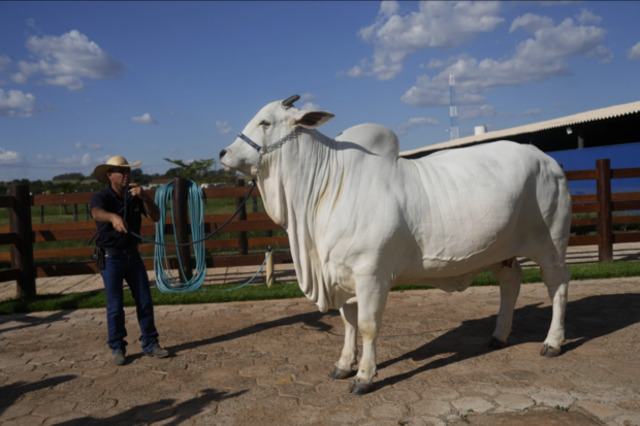
The Legacy of Viatina-19 and the Future of Cattle Genetics
As Viatina-19 continues to breed and her offspring are sold for high prices, her impact on the cattle industry is set to grow. Cloning efforts are already underway to create more cows like Viatina-19, ensuring that her superior genetic traits are passed down to future generations. While cloning cattle is still a controversial practice, it reflects the growing importance of genetics in livestock production. Viatina-19’s success could lead to the creation of an entirely new generation of cattle that could further revolutionize the beef industry.
However, Viatina-19’s legacy may not be limited to just her offspring. Her influence on the future of cattle breeding could extend to other industries, such as dairy farming and wool production, where genetic advancements can lead to higher yields and improved product quality. For now, ranchers like Ney Pereira and his daughter Lorrany Martins are focused on continuing to improve their livestock, with the hope that Viatina-19’s legacy will shape the future of the industry for decades to come.
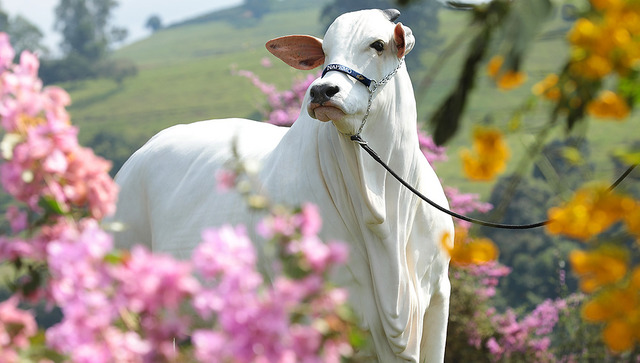
Video
Watch this video to see how an indoor hydroponic farm grows nutritious fodder, offering a glimpse into sustainable farming practices.
Conclusion
Viatina-19 represents more than just a record-breaking cow; she is a symbol of Brazil’s evolving cattle industry and its ambitions to dominate global beef markets. With her immense size, genetic superiority, and high market value, Viatina-19 embodies the future of cattle breeding and the economic potential of Brazil’s agricultural sector. But with her success comes a complex web of environmental, ethical, and sustainability concerns that the industry must address if it hopes to continue growing without further damaging the planet.
Viatina-19’s legacy will likely shape cattle farming for years to come, as breeders seek to replicate her success and take advantage of the emerging opportunities in global beef markets. Ultimately, the story of Viatina-19 serves as a testament to the power of innovation in agriculture and the drive for excellence in the pursuit of economic success.
